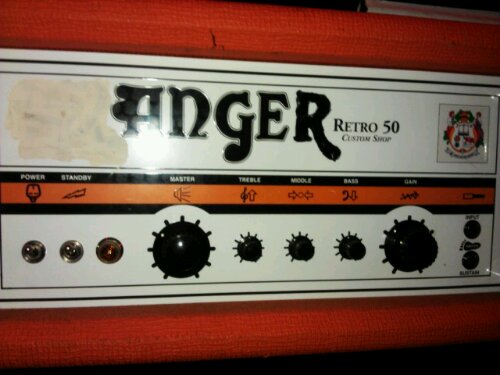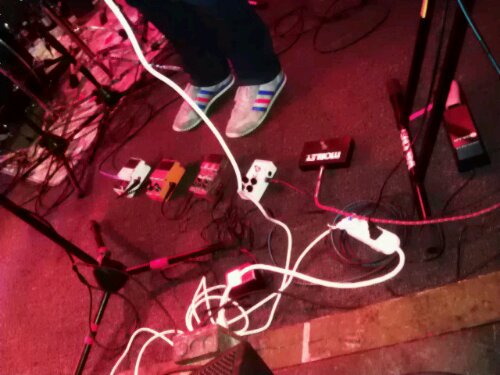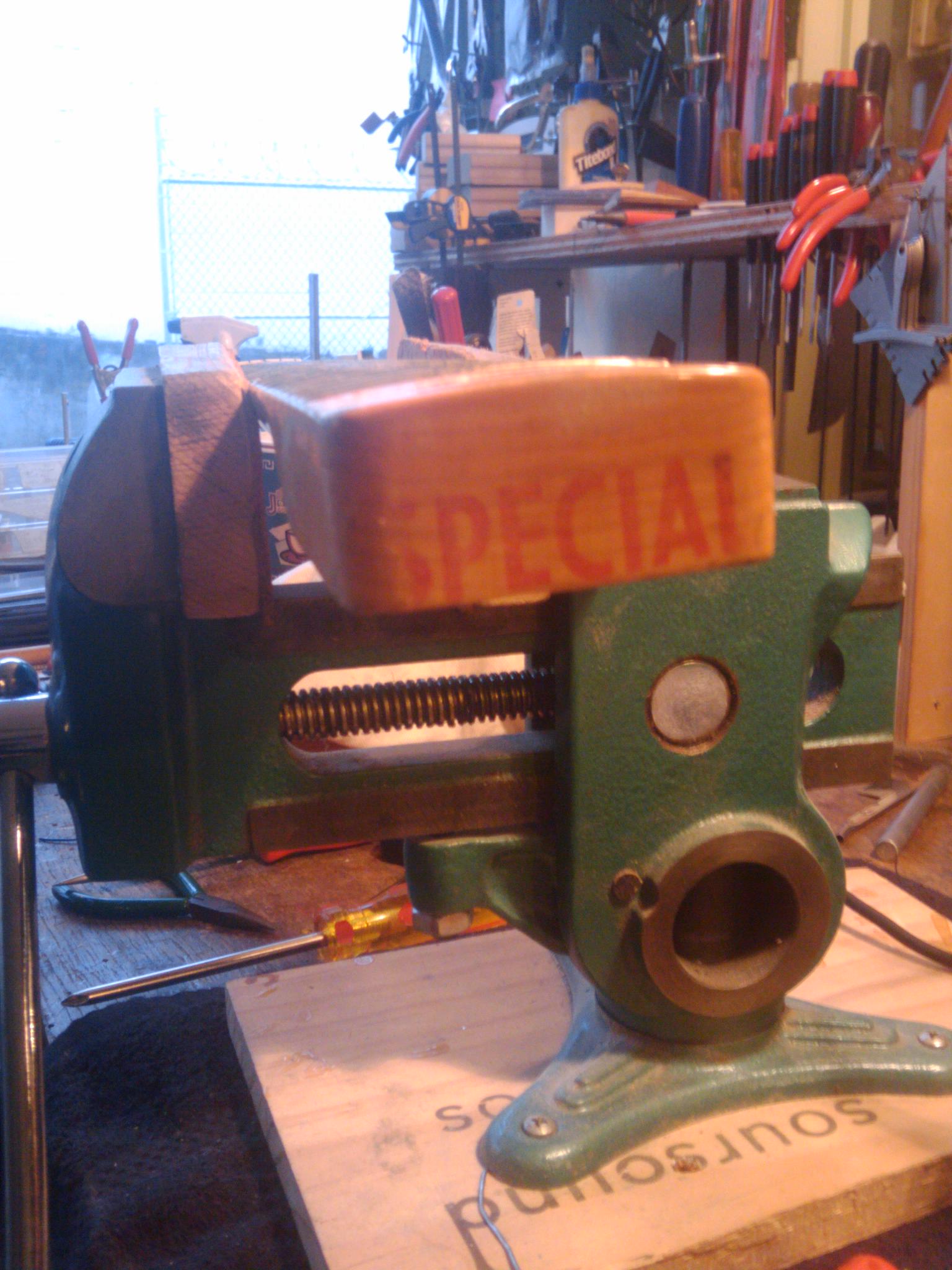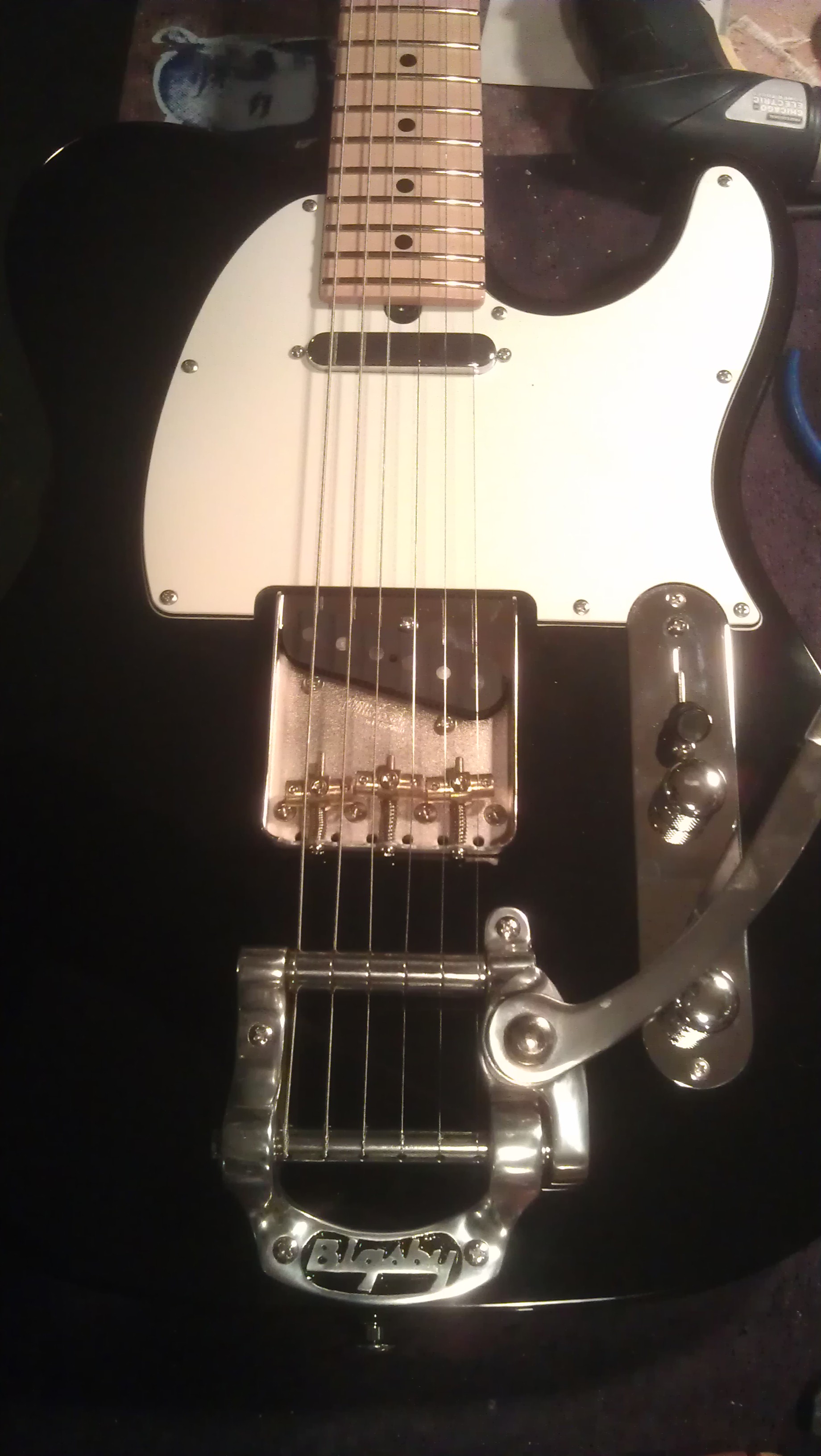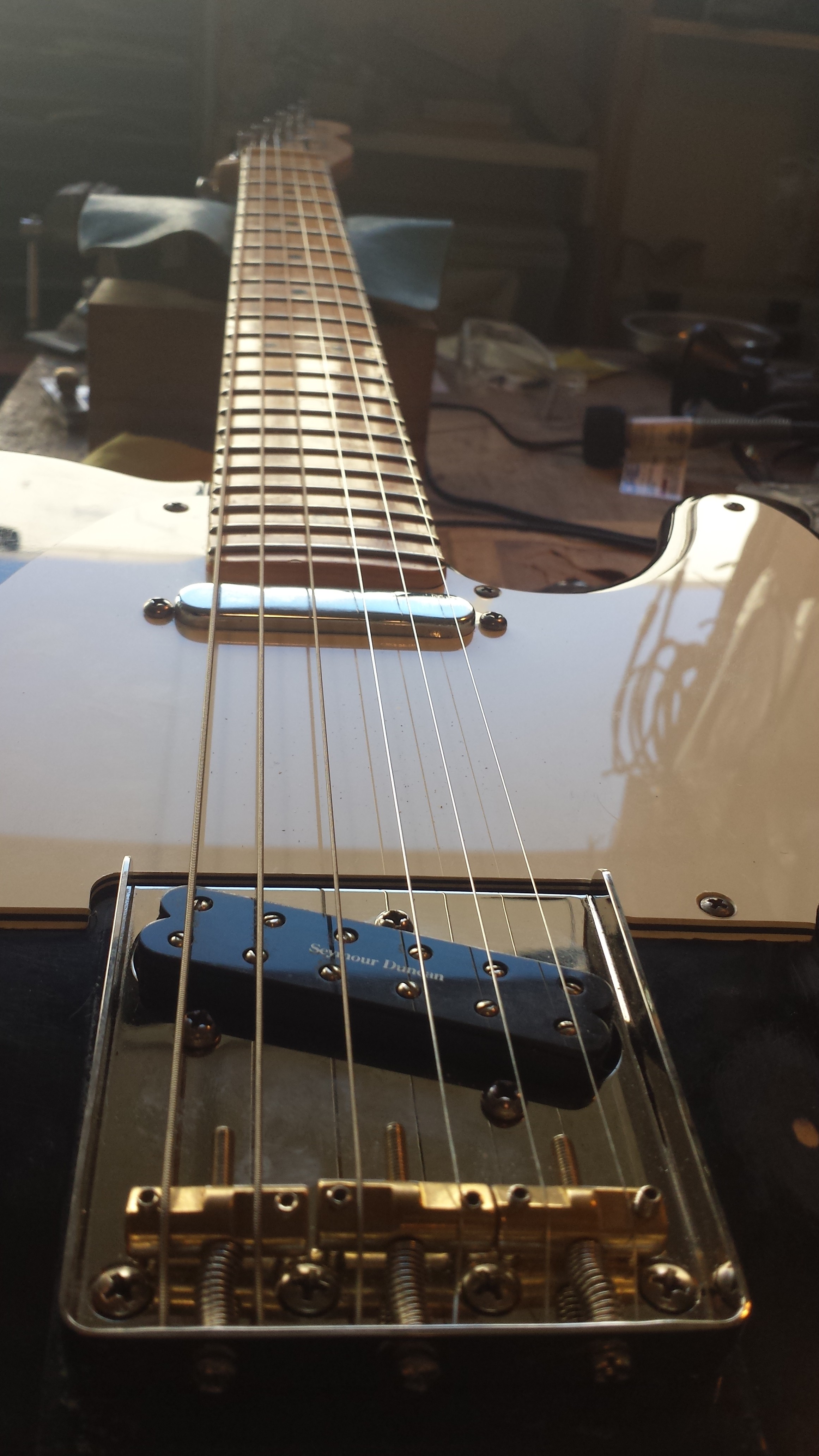 This guitar has spent many years serving its owner, Sean Flinn (of Sean Flinn and the Royal We) onstage as an American Standard, with a 6 saddle bridge, black pearloid pickguard, schaller style tuners, and stock pickups. But over time he wanted to go with a more traditional look and feel, while fattening up the bridge pickup. And with his busy touring schedule, we had a limited time to get it together.
This guitar has spent many years serving its owner, Sean Flinn (of Sean Flinn and the Royal We) onstage as an American Standard, with a 6 saddle bridge, black pearloid pickguard, schaller style tuners, and stock pickups. But over time he wanted to go with a more traditional look and feel, while fattening up the bridge pickup. And with his busy touring schedule, we had a limited time to get it together.
Author Archives: asayler
Cool Mods for Teles
The Telecaster is one of the most popular guitars of all time, for good reason. Its versatility, tonefulness, playability, and signature sustain, snap, and boldness are practically unparalleled in the guitar world. Just about every guitarist will eventually fall in love with a Tele. But while the 2 pickups, 2 controls, and 3 position selector switch have been the standard options for decades, they are far from the only way to make use of this humble worksmith. Here are a few options you can use to make your Tele more personal and more unique! Continue reading
Martin Factory Setup Tweaks and Buzz Fixes
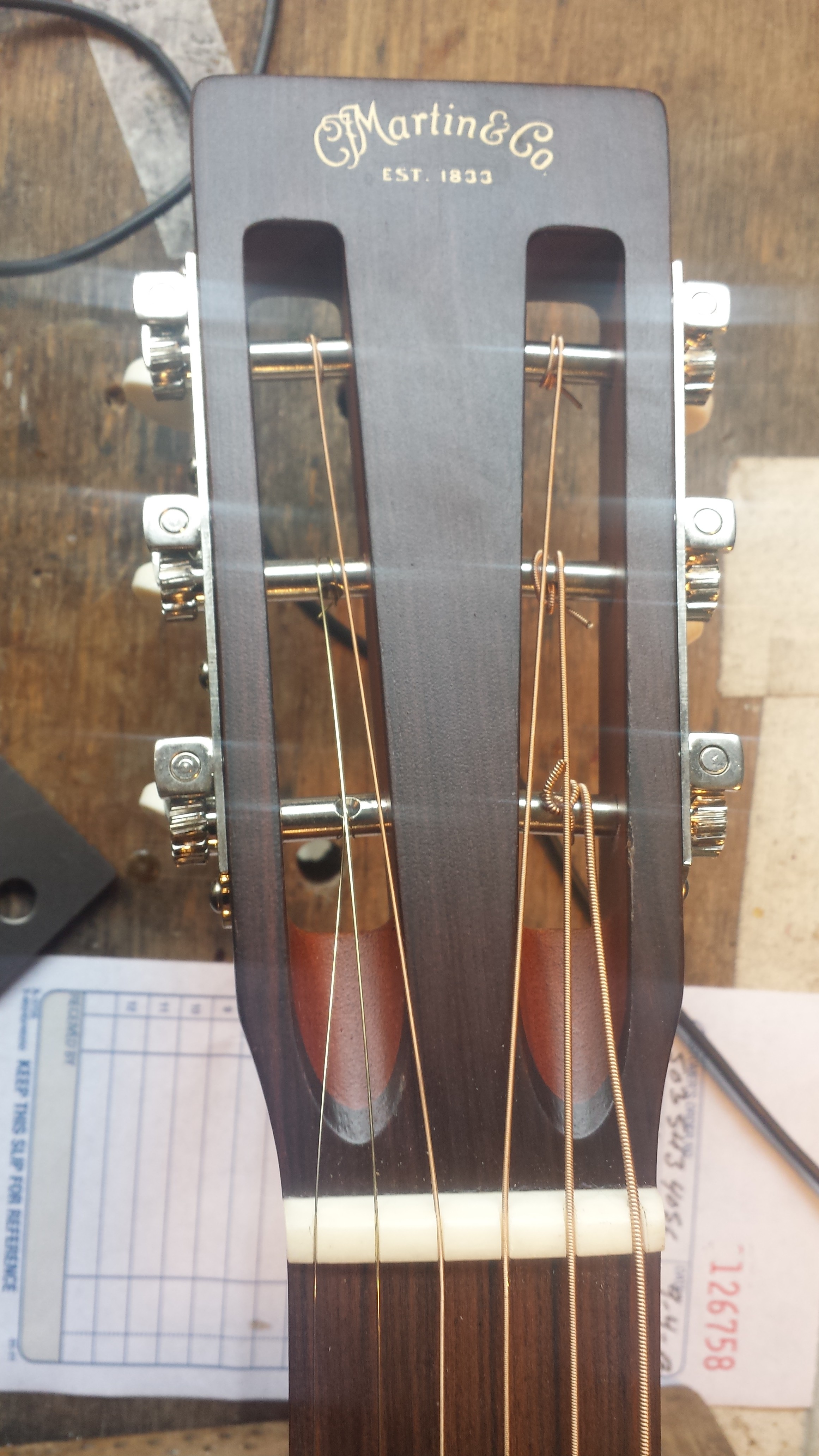 Even very nice guitars, brand new from the factory, can need some tweaks and adjustments. Unless you’ve worked directly with your luthier on a custom-made guitar where everything is to your preferences, most factory setups are a one-size-fits-all middle ground. By the time the guitar travels from wherever it was made to your climate, the neck may have shifted, or the body taken on or lost moisture, and adjustments to the action can be in order. This beautiful lefty Martin had action a little on the high side. More importantly, there were some barely perceptible buzzes coming from a few frets and strings, but also some kind of sympathetic buzz coming from the tuners. Some people might not notice them, but those kinds of little rattles can be the most annoying to players when the guitar is miked in the studio and they really come out through headphones. They can also be among the toughest to track down. Continue reading
Even very nice guitars, brand new from the factory, can need some tweaks and adjustments. Unless you’ve worked directly with your luthier on a custom-made guitar where everything is to your preferences, most factory setups are a one-size-fits-all middle ground. By the time the guitar travels from wherever it was made to your climate, the neck may have shifted, or the body taken on or lost moisture, and adjustments to the action can be in order. This beautiful lefty Martin had action a little on the high side. More importantly, there were some barely perceptible buzzes coming from a few frets and strings, but also some kind of sympathetic buzz coming from the tuners. Some people might not notice them, but those kinds of little rattles can be the most annoying to players when the guitar is miked in the studio and they really come out through headphones. They can also be among the toughest to track down. Continue reading
L.R. Baggs Lyric Pickup System Installation and Review
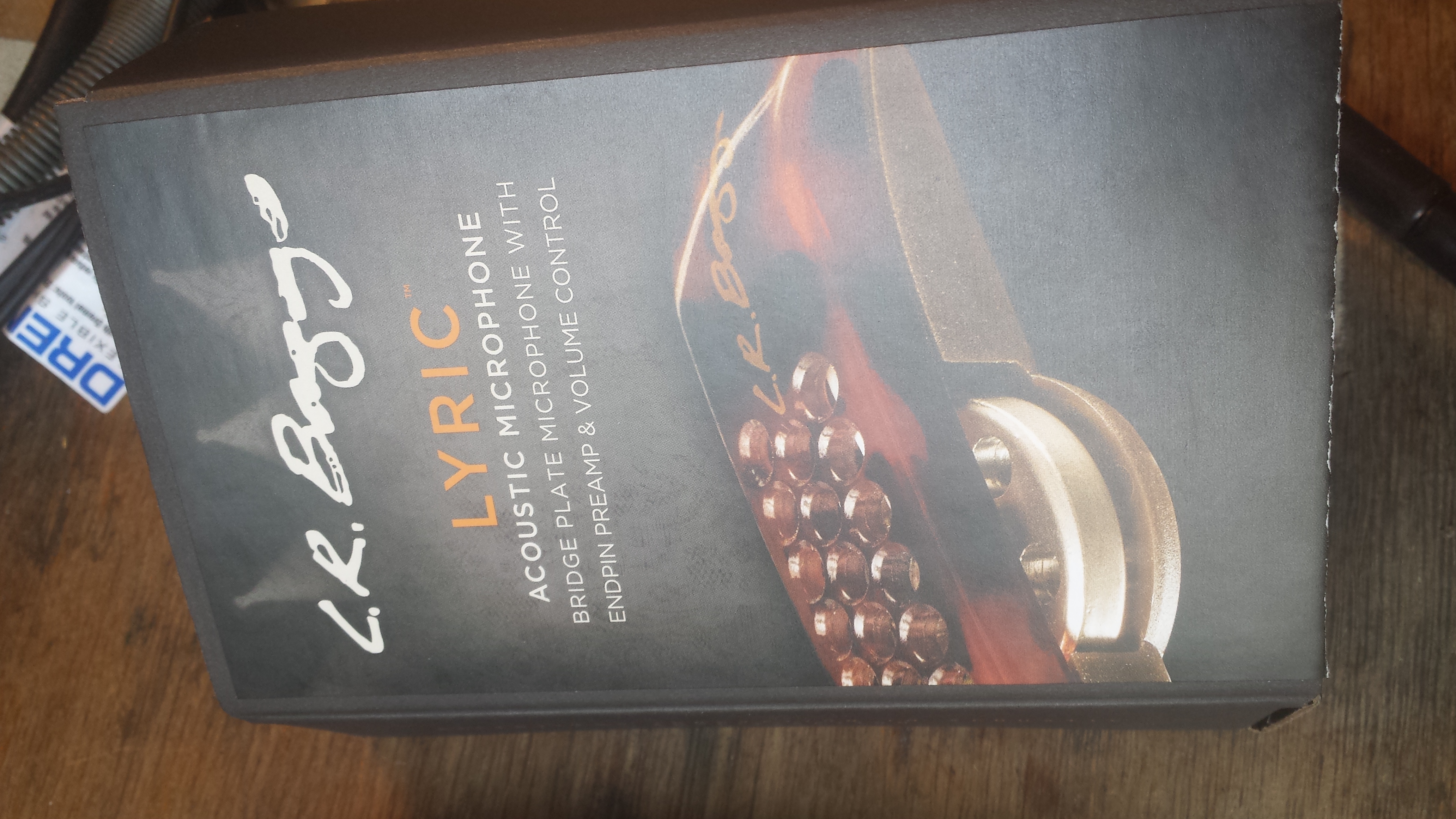 I’ve been really enjoying the new line of L.R. Baggs acoustic pickups. Starting with the introduction of the M1 soundhole pickup, they’ve been changing the expectations for acoustic imaging and fidelity from a pickup. It’s always been a struggle getting accurate amplified acoustic sound, and while there are some tried and true solutions, some of the new products on the market are really changing the game for the working musician. Continue reading
I’ve been really enjoying the new line of L.R. Baggs acoustic pickups. Starting with the introduction of the M1 soundhole pickup, they’ve been changing the expectations for acoustic imaging and fidelity from a pickup. It’s always been a struggle getting accurate amplified acoustic sound, and while there are some tried and true solutions, some of the new products on the market are really changing the game for the working musician. Continue reading
Upgrades to Give Your Vintage Danelectro or Silvertone New Life
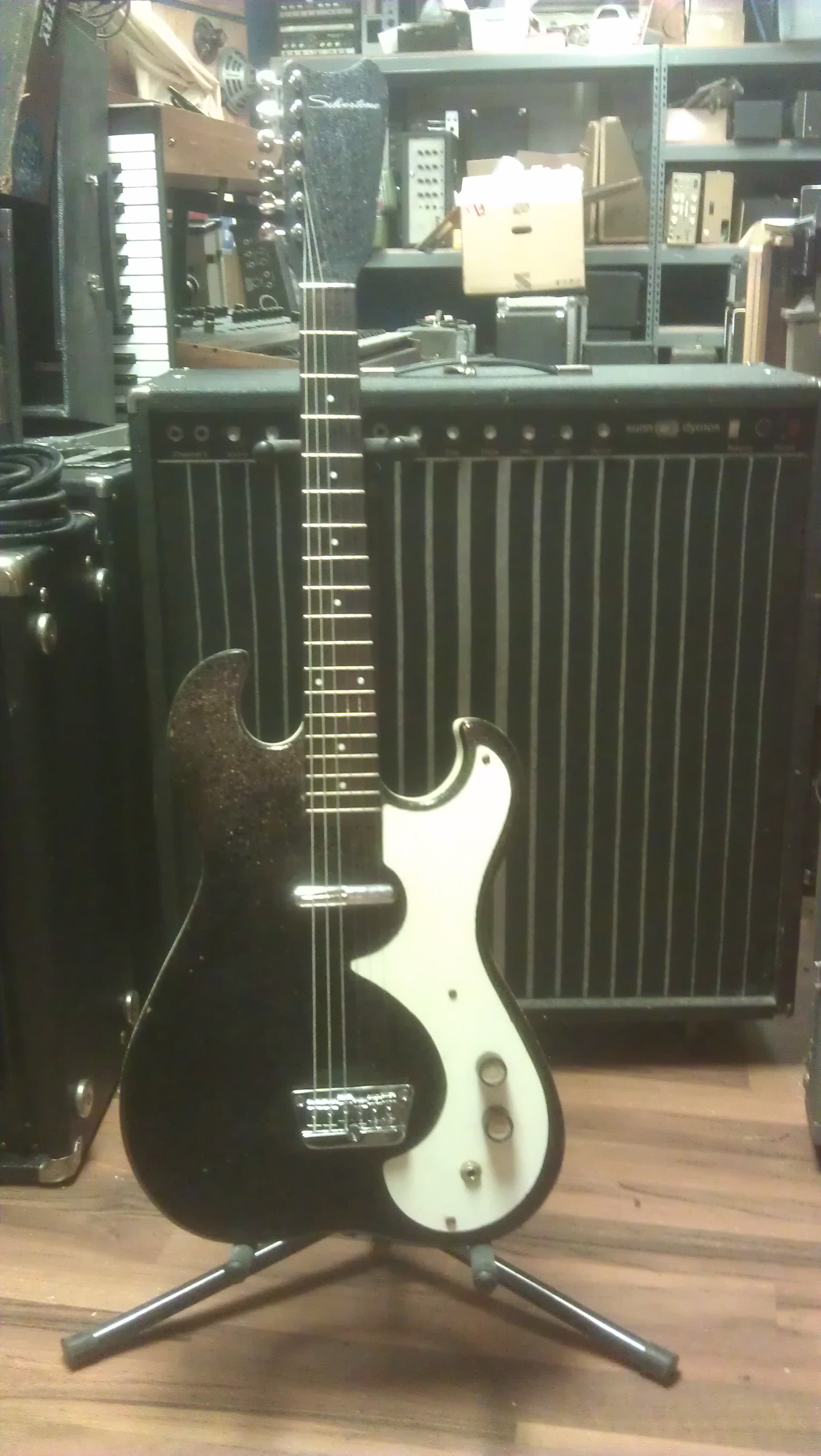 Vintage Danelectro and Silvertone guitars have gotten a lot more popular in recent years as players have discovered their unique tones. These were always budget guitars, but as necessity is often the mother of invention, the original designers created some great sounds on the cheap. Thankfully for budget-minded guitarists, prices on these spare-parts beauties haven’t climbed as much as their vintage contemporaries, so you can still get into all the trashy grind and round cleans of those lipstick pickups without breaking the bank. Continue reading
Vintage Danelectro and Silvertone guitars have gotten a lot more popular in recent years as players have discovered their unique tones. These were always budget guitars, but as necessity is often the mother of invention, the original designers created some great sounds on the cheap. Thankfully for budget-minded guitarists, prices on these spare-parts beauties haven’t climbed as much as their vintage contemporaries, so you can still get into all the trashy grind and round cleans of those lipstick pickups without breaking the bank. Continue reading
Installing Callaham-Upgraded Bigsby on a Suhr Telecaster
Callaham Guitars has recently added some cool upgrade options for Bigsby vibratos that fix some long-criticized design features on the Bigsby. The accessories are functional and add Callaham’s signature precision machining and premium materials. I’m installing the upgraded string shaft and front roller on a B-5 vibrato tailpiece. I’m also installing the upgraded Bigsby on a Suhr tele, which requires modifying the Wilkinson bridge to accept behind-the-bridge stringing. Callaham offers a beautiful bridge upgrade for teles that does the same thing, but modding the Wilkinson only takes about an hour, making it a little more affordable than the completely custom-machined Callaham.
The first step is swapping the string roller. Just loosen the set screw and the roller pin taps out easily.
Malkmus tour Columbia, MO

We’re on the road again, crawling across the floor of what my poet friend Nathan Bartel fondly calls “the inland ocean.”
Malkmus tour Omaha
Coffee is a mandatory fuel for everyone on this trip, so much so that the TM carries an aeropress and the band stops by our room before we leave the hotels– with the first stop usually being a coffee shop. We follow a similar routine and roll into Omaha in time for a decent breakfast before loading in at the Slowdown. Someone tells me Connor Oberst invested heavily in building up a good venue in Omaha, and the place is nice– intimate and spacious at the same time, with a small, high quality line array for FOH and a friendly, professional crew.
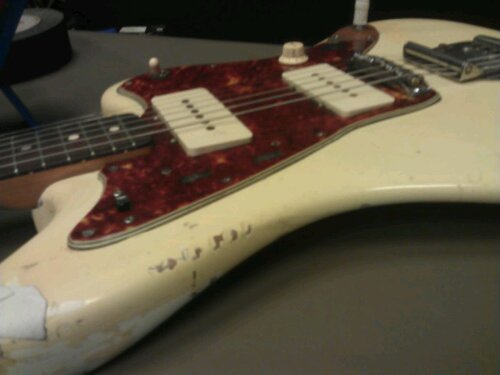
I’m trying to improve the band’s experience little by little, and in Omaha I spend time taking setup specs on Stephen’s guitars. His jazzmaster is an early 60’s with a few changes, and a lot of quirks. Continue reading
Malkmus tour day 5
Data speeds have been spotty out here in the middle of the country’s open spaces, but things are going nicely. The pacing of the days is nice, with later load-ins, generally brief sound checks, and the long drives broken up into multiple days to keep fatigue down. The SLC show was a great tour kickoff, and I’m getting the hang of the tunings and changes. The band are all great performers and low maintenance. You can tell they’ve been doing this for years and there’s a good chemistry.
Malkmus tour day one: SLC

Salt Lake is at its best with a little snow on the peaks, beautiful as soon as I hit the ground. The downtown grid is one of the most confusing I’ve ever traveled, with almost every street named something like “east 200 st south”, so even the GPS on the way back to the venue seemed mixed up. Flying in day of show and jumping into a totally unfamiliar situation is a little nerve wracking and I wasn’t fully sure what to expect, despite having talked to the band and TM ahead of time about their needs and preferences.
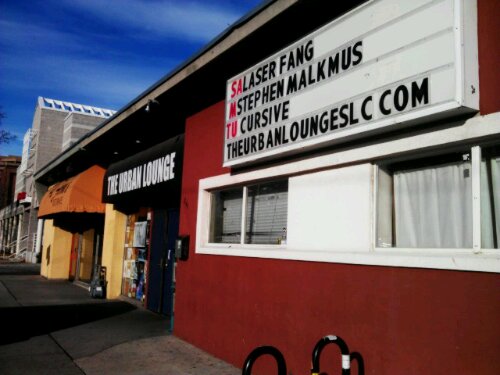
The urban lounge is a good old fashioned rock club, graffiti covering the bathrooms, small, loud, and gritty, but the back stage area is relatively clean and the staff are all nice and helpful.
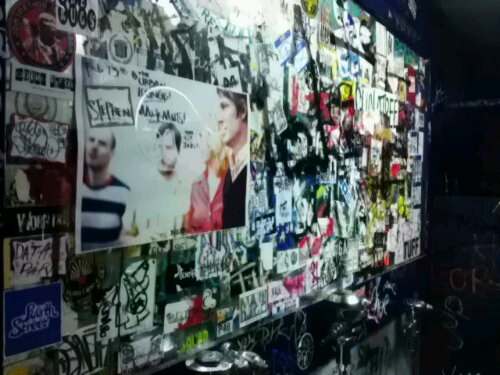
I’ve tried to anticipate problems despite being told all gear is in good shape. When I arrive everything is already set onstage, so I use the opportunity to take some pictures and note settings, pedal placement, signal routing, etc. There’s nowhere near enough time to assess everything, but I start with some immediate basics, adding Velcro cable keepers to separate cables, checking batteries, adding power supplies to pedals without them, dressing cords down with gaff tape do they’re not a tripping hazard… Before I know it the band is on stage and I shift gears to watching their stage presence, asking everyone what they’ll want throughout the night, and getting a feel for the performance.
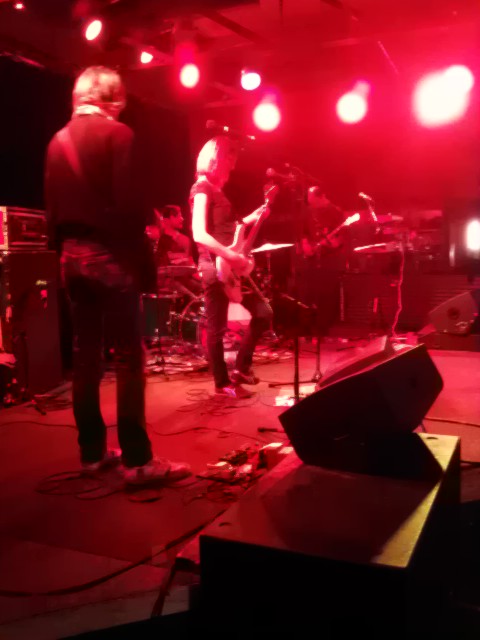
Everyone is pretty self sufficient on stage and laid back off, so I get a good feeling about how it will all go. My biggest challenge will be learning which tunings are for which songs. With around ten different tunings and a song repertoire of 50 songs, it’s a lot to keep straight, and with only two guitars going through all those wild tunings, there’s not much margin for error. The band changes the set every night, will be hand writing the set list, and Steven will denote which guitars he wants to use for which song. Hopefully I’ll have time to note tunings as well and not screw anything up during the gig…
Below are just a few snaps of various spots on stage. Hopefully the settings and everything sink in; they’re straight forward, but I’ve had hardly any time to go through the gear. Cross your fingers for me tonight and I’ll try to update later…

